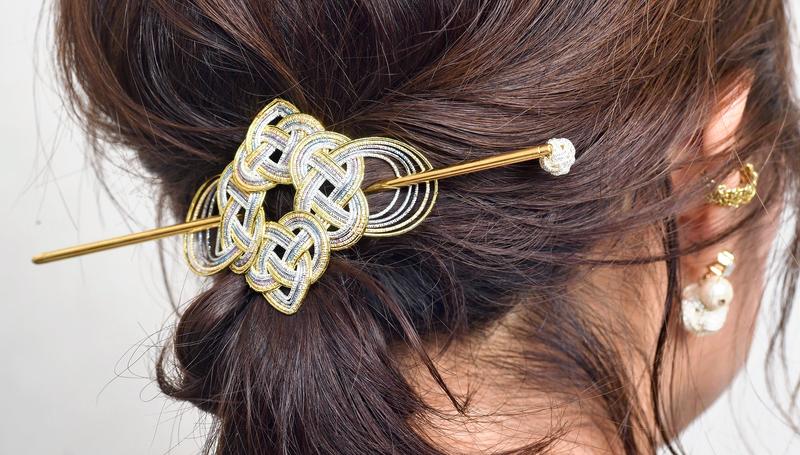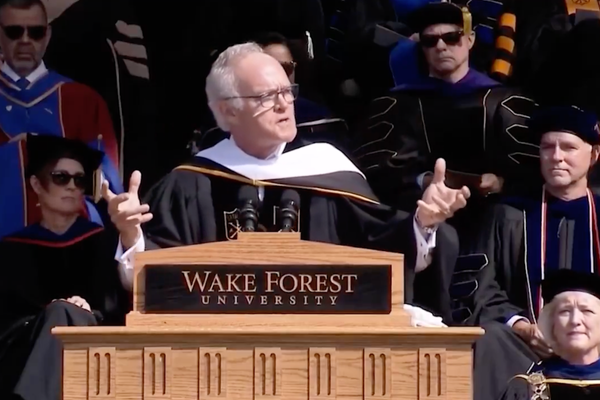
Mizuhiki is a classic Japanese decorative string made of paper that is a reminder of the beauty in Japan. Traditionally, it is used to add a pop of color to gift wrapping and to envelopes, which are used when gifting money, but today, it has inspired people to get more creative with its uses by making chic small pieces or incorporating it into accessories.
Mizuhiki is paper formed into the shape of string, which is then starched and dried. New types of mizuhiki have appeared in recent years, such as the ones made of washi -- traditional Japanese paper -- with a thin thread twisted around it. Traditional mizuhiki colors are gold, silver, red, white and black, but the new types utilize yellows, greens, blues, as well as pearlescent colors.
"There are various ways to make a knot with mizuhiki, which has been passed down for many, many years," said mizuhiki artist Nana Kikuta, who creates handmade mizuhiki accessories and other knickknacks. "Each knotting method contains people's thoughts and memories. I'd like to incorporate the traditional aspects of mizuhiki with the fascinating aspects of being able to create infinite design possibilities."

Born in 1982, Kikuta comes from Kanagawa Prefecture and first started working as a graphic designer after graduating from a technical college. Having started her career as a mizuhiki artist in 2016, Kikuta now runs the online shop Musubiya Koen. She has also published a book on mizuhiki art.
Kikuta's mizuhiki works include bookmarks that are about 12 centimeters long and topped by various motifs. She makes the motifs of a flamingo, a swan and a red heart by arranging a traditional knot called "Awaji-musubi" or the Awaji-style knot. One of the knot's meanings is, "praying for a long-lasting relationship." The various designs are sure to make you say, "That's so cute!"
The motif of a plum blossom is made with "ume-musubi," or a plum knot, which looks elegant and beautiful.

To make an elaborate pair of earrings and a matching hair accessory, Kikuta used gold, silver and pearlescent white mizuhiki, which make the items look as if they are made of some kind of metal at first glance. The pattern for the hair accessory is an arrangement of Awaji-musubi, with four of the knots put together. It is a lot lighter than metal as well.
Kikuta also makes earrings with a ball-shaped mizuhiki knots called tama-musubi, which are combined with cotton pearls and acrylic beads.
Kikuta's ornaments made with a "kano-musubi" knot look gorgeous as they use five mizuhiki cords put together to look like one ribbon. The name "kano-musubi" comes from the kanji character for the verb "kanau," which means "come true" as in the sentence "A dream comes true," because the knot, when looked at from the front and from the back, looks like the two parts that make up the kanji character. Therefore, the knot is regarded as a token of good fortune and is often used when decorating amulets and other good luck charms. Kikuta has added tama-musubi on both ends of the ribbon to add a unique touch.

Various types of mizuhiki are available for purchase at sundry shops and online stores, and Kikuta mainly uses mizuhiki that are about 90 centimeters in length.
"Add a bow made of mizuhiki to a present and it will give it a different feel compared to a ribbon. I encourage everyone to give it a try," she said.

Read more from The Japan News at https://japannews.yomiuri.co.jp/







